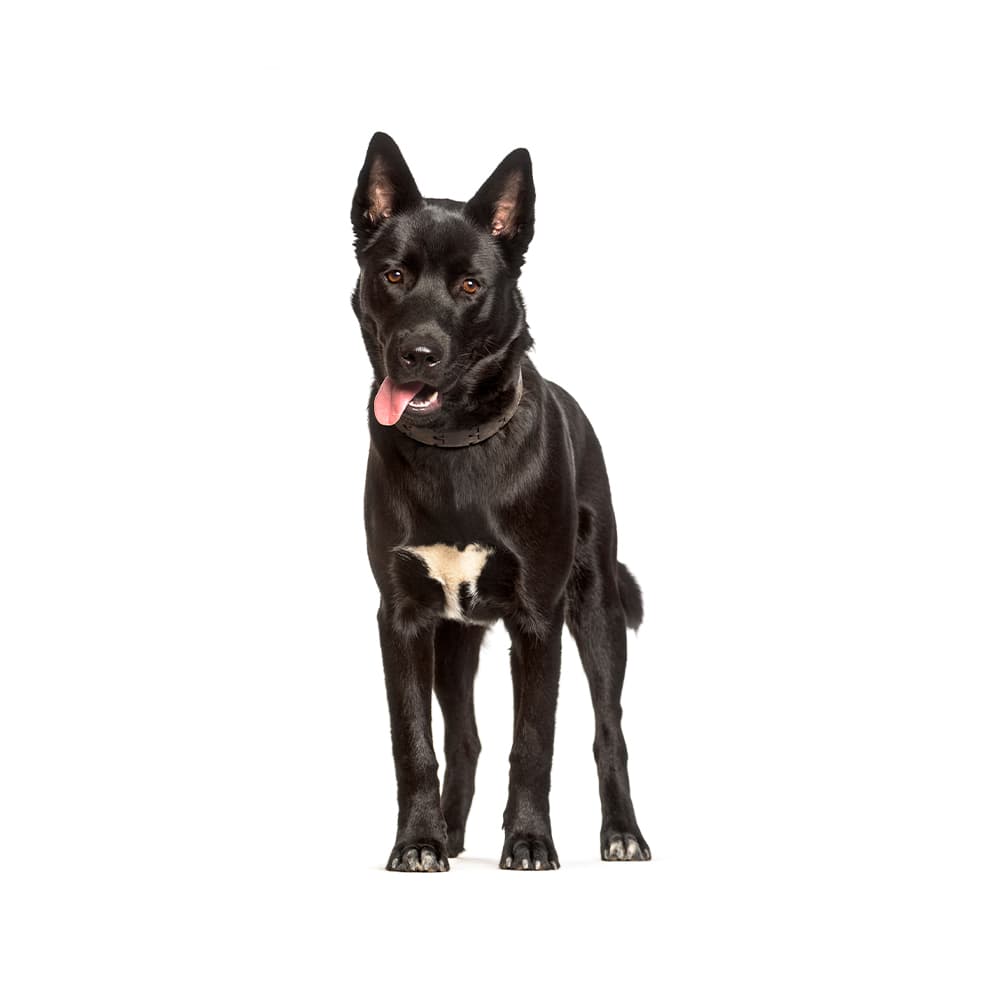Discover your dog's connection to this breed and 200+ others


Discover your dog's connection to this breed and 200+ others



The Karelian Bear Dog is a Finnish breed with a long history dating back to ancient times. This breed was originally used by the Karelian people, who inhabited the region between Finland and Russia, for hunting large game, including bears and elks. They were highly valued for their bravery and hunting skills. Over time, the breed's popularity spread beyond its native region, and it became recognized for its exceptional abilities as a hunting and working dog.
Karelian Bear Dogs can suffer from degenerative myelopathy and progressive rod-cone degeneration, which are common genetic conditions in canines. A specific condition for which this breed should also be tested is chondrodysplasia. As for all breeds, genetic screening is recommended to assist veterinarians with diagnosis and proactive care, as well as help breeders identify affected and carrier dogs.
Karelian Bear Dogs are known for their courage, determination, and loyalty. They are independent and strong-willed, which can make training a challenge for novice dog owners. Early socialization and consistent, positive reinforcement training are essential to shape their behavior and ensure they develop into well-mannered companions.
Their strong hunting instincts make them excellent watchdogs, but they may exhibit aggressive behavior towards other dogs, as well as small animals like cats, due to their strong prey drive. With proper training and socialization, they can get along with other dogs and pets in the household. However, these dogs can be difficult to handle around new dogs, as they love a challenge and can easily become aggressive. It is very important to have early and consistent training to prevent aggressive behavior around dogs not from the household.
A canine genetic lineage is a group of individuals or entire breeds that descended from common ancestors predating modern breed formation. Often these lineages are associated with a ‘type’ of dog with a unique historical working role and associated behaviors (e.g., herding, scent hunting, etc.).
Spitz and Sled Dogs originate in the Arctic and subarctic regions which caused them the develop adaptations to cold climates. Some of these adaptations give rise to characteristics of the lineage, most notably a dense double coat that helps with insulation. The lineage of these dogs can be followed back to ancient breeds developed by Indigenous people. These ancient breeds were used as an aid for transportation, herding, guarding, and hunting. These jobs have created dogs that are independent, intelligent and have strong work ethics as well as a sturdy body that helps them to pull sleds or go on long journeys over rough terrain.
Example breeds with ancestry from this lineage include Akita, Chow Chow, and Siberian Husky.
In their native region, Karelian Bear Dogs are still used as bear deterrents. They help prevent bear-human conflicts by scaring away bears from inhabited areas.
The breed has a dense, double coat that provides protection against harsh, cold weather conditions and brush while hunting.
The Karelian Bear Dog holds the title of the official state dog of Minnesota, USA.
https://www.akc.org/dog-breeds/karelian-bear-dog/
https://www.ukcdogs.com/karelian-bear-dog
https://www.fci.be/en/nomenclature/KARELIAN-BEAR-DOG-48.html
Recommended by top vets with decades of experience
21 breeds
64 genetic health markers
50 genetic trait markers
